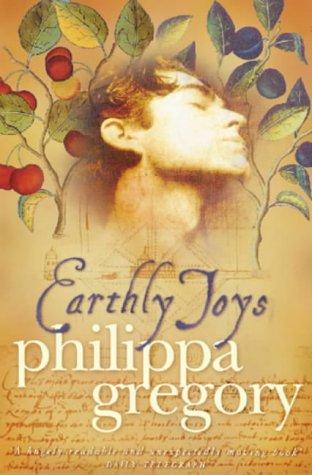 By Erastes
By ErastesI'm a keen gardener, and I'd often seen the genus Tradescantia on plants that I planted in my garden. I didn't know what that word meant for many years. I assumed it was from where the plants were from, or perhaps a particular thing about their genetics.

 It wasn't until I read Philippa Gregory's Earthly Joys that I realised what it meant: it refers to the man who introduced these plants to the United Kingdom, John Tradescant.
It wasn't until I read Philippa Gregory's Earthly Joys that I realised what it meant: it refers to the man who introduced these plants to the United Kingdom, John Tradescant.There were actually two John Tradescants--The Elder and the Younger. They were both obsessive plantsmen and brilliant gardeners.
The Elder John rose to fame as head gardener to the Earl of Salisbury at Hatfield House. An influential man at Court (Tradescant seems to hover around hugely influential men) and completely redesigned the gardens at Hatfield for the new house that Salisbury had built. These gardens were formal (unlike the broad sweeping "natural" landscapes that were later fashionable when Capability Brown came along) comprising mazes, knot gardens, water parterres and terraces.
 But it wasn't just as a gardener that Tradescant became famous; he travelled widely, hugely widely for a simple gardener in the 17th century--Russia, the Levant, Algeria, Holland, France. Everywhere he went he bought, begged, borrowed seeds and seedlings, wrapped them up and transported them in huge numbers and brought them back to England. He was solely responsible for introducing the horse chestnut to England, bringing back six beautiful "conkers" and waiting years and years for them to grow, blossom and flower. It's hard to imagine, in a country where horse chestnuts are everywhere, that once people paid money to come and look at these odd trees.
But it wasn't just as a gardener that Tradescant became famous; he travelled widely, hugely widely for a simple gardener in the 17th century--Russia, the Levant, Algeria, Holland, France. Everywhere he went he bought, begged, borrowed seeds and seedlings, wrapped them up and transported them in huge numbers and brought them back to England. He was solely responsible for introducing the horse chestnut to England, bringing back six beautiful "conkers" and waiting years and years for them to grow, blossom and flower. It's hard to imagine, in a country where horse chestnuts are everywhere, that once people paid money to come and look at these odd trees. John the Elder then went to work for another Court favourite, James I's good friend and confidant (and some would say lover, too) George Villiers, the 1st Duke of Buckingham, and it was here in Gregory's book that she rather bends the truth! Unfortunately, I can't see the handsome George going to bed with Tradescant, as he in reality looked like the man in his portrait at the head of this post, and not the gorgeous creature on the cover of her book. Still, it's a great book, full of wonderful gardening information and a tender love story that stomped my little heart to bits!
John the Elder then went to work for another Court favourite, James I's good friend and confidant (and some would say lover, too) George Villiers, the 1st Duke of Buckingham, and it was here in Gregory's book that she rather bends the truth! Unfortunately, I can't see the handsome George going to bed with Tradescant, as he in reality looked like the man in his portrait at the head of this post, and not the gorgeous creature on the cover of her book. Still, it's a great book, full of wonderful gardening information and a tender love story that stomped my little heart to bits!John's son, John the Younger, travelled even more widely than his father, going as far as the Americas, and continued to collect plants and seeds to bring back to England, plants such as the magnolia, the tulip tree, and plants we take for granted such as aster and phlox. They displayed their finds in their house in Lambeth and charged the public to view them in what they called "The Ark." John the Younger became head gardener to Charles I, survived the civil war and was buried beside his father in Lambeth.